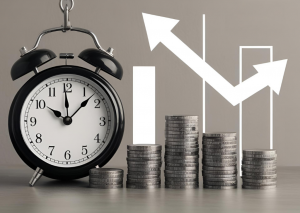Like individual stocks, exchange-traded funds (ETFs) are investment funds that contain a variety of fundamental assets and investors can trade them on an exchange. Investors can easily trade exchange-traded funds on a stock market, just like any other asset. ETFs combine mutual funds with the listed company’s equities. To put it another way, ETFs are groups of many investment classes that offer the versatility and diversity of stocks.

Exchange-traded funds gather shares, bonds, debt instruments, and other commodities that may be easily traded on a stock market. ETFs can track an extensive and varied collection of equities or the market value of a commodity. ETFs can even track certain investing methods. Investors can choose from a variety of ETF categories to generate income, speculate, or manage risk in their portfolios. Many exchange-traded funds (ETFs) currently base themselves on indexes that are broad-market, industry-specific, asset-class-specific, and specific to a nation.
What Are Mutual Funds?
Financial professionals define a mutual fund as an investment instrument that combines the capital of several participants to buy a diverse portfolio of stocks, bonds, or other assets. It enables individual investors to allocate risk among several investments, have access to a professionally handled portfolio, and potentially take advantage of economies of scale.
A fund manager or team actively manages an extensive amount of mutual funds, making decisions on the purchase and sale of stocks or other assets within the fund to outperform the market and assist investors in making money.
These funds are often more expensive since conducting securities research and analysis takes a lot more time, energy, and resources. Investors and mutual funds deal directly when purchasing or selling mutual funds. The fund does not decide the price until it establishes the net asset value (NAV) after the business day.
Cost and Management Style
You should consider various aspects—such as tax efficiency, flexibility, management style preference, cost concerns, and investing goals—when deciding between mutual funds and exchange-traded funds (ETFs). ETFs provide alternatives for passive investing and are often more affordable, with fewer costs, although they may incur brokerage fees. Additionally, they provide additional freedom for individuals needing more control over their assets or who prefer to trade continuously all day.

In contrast, mutual funds sometimes have higher fees because of their active management and the competence of experienced managers who actively choose investments to outperform the market. As a result, investors may have to pay more taxes and receive larger capital gains in dividends.
Another important issue to consider when deciding between mutual funds and exchange-traded funds for long-term investments is cost. ETFs typically outperform other investment options in terms of expense ratios because passive management keeps more money invested.
Long-term investors particularly benefit from this cost-efficiency since the savings have the potential to compound over time, increasing total profits. For long-term investors, mutual funds, especially actively managed ones, are less cost-effective than exchange-traded funds due to their higher fees, which can drastically cut net profits.
Performance and Risk Considerations
The nature of the funds must be taken into account when comparing the returns of mutual funds with exchange-traded funds (ETFs). Actively managed mutual funds have always sought to surpass the market, albeit not all are successful. Conversely, fund managers design exchange-traded funds (ETFs) to replicate the performance of their underlying index, resulting in more consistent returns that may not outperform the overall market.
The risk persists as another important consideration. There are hazards associated with both kinds of investments, such as market, liquidity, and management risk. ETFs can nevertheless be liable to market volatility and liquidity problems, even if they frequently provide the advantages of diversification and passive management, particularly for less frequently traded funds. Market risk is also present in mutual funds, and depending on the choices made by the fund manager, active management may add to the risks.
Liquidity and Accessibility
Another crucial factor for investors is liquidity. ETFs have high liquidity because, like individual stocks, investors may purchase and sell them at any time throughout the trading day. This flexibility is beneficial for investors who might want rapid access to their investments.
On the other hand, mutual funds may restrict accessibility to funds because they usually only trade at the fund’s net asset value (NAV) after the trading day. ETFs and mutual funds will probably rely on the same fundamental elements: cost, investing objectives, and management approach.
When to Choose ETFs
If you like flexibility and want to be able to purchase and sell at any time throughout the trading day, an exchange-traded fund (ETF) is an ideal option. They provide intraday flexibility and trade on exchanges similarly to equity. ETFs offer a viable option for investors who are concerned about taxes because their specific structure tends to make them more tax-efficient. ETFs often have lower expense ratios than many mutual funds, which can result in long-term cost savings.
You can consider investing in ETFs if you are an active investor who enjoys making frequent adjustments to your portfolio, your major priority is tax efficiency, and the concept of reduced fees appeals to you. If you have portfolios of high-volatility stocks for investors who are willing to take on a lot of risk, then ETFs are for you.
When to Choose Mutual Funds
Investing in mutual funds is similar to having a financial advisor by your side. To manage your money, fund managers use their knowledge and research to make investment selections. Since they let you invest in a variety of assets with a single transaction, mutual funds (MFs) are excellent for diversification.

Mutual funds, with their systematic investment plan choices, might be a great fit for your investment style if you want a periodic, disciplined approach. You can consider investing in mutual funds if you would rather take a more passive approach to investing, one of your major priorities is diversification, and the concept of professional management appeals to you.




